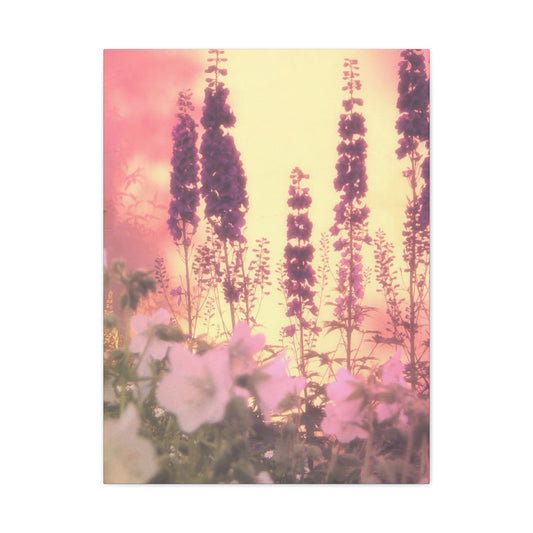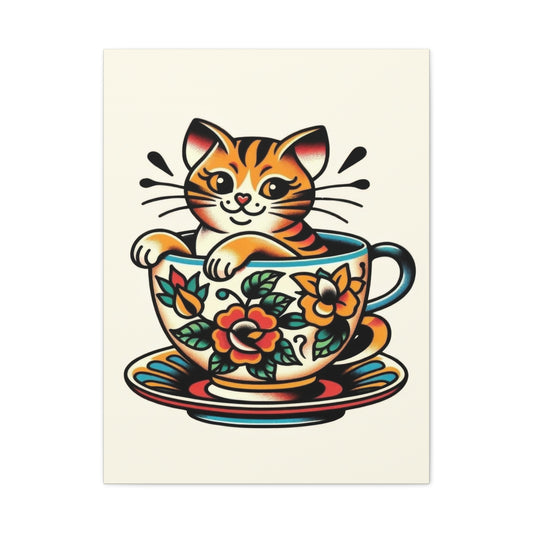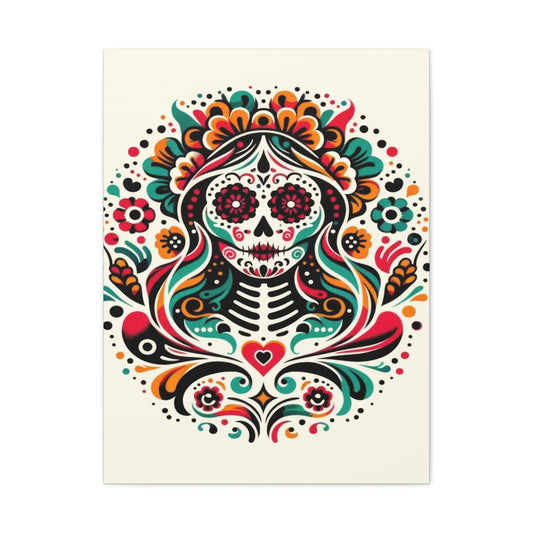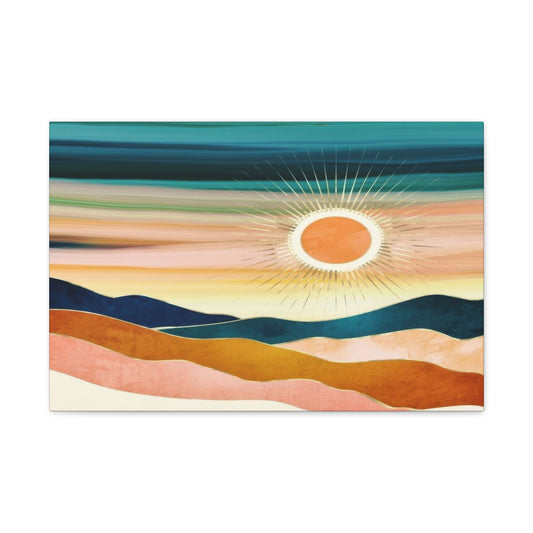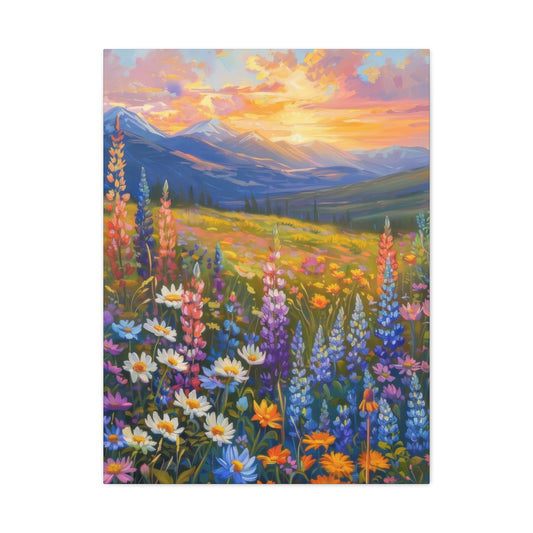The Magic of Colorful Wall Art: Transforming Walls into Vibrant Stories
When it comes to interior design, few elements can transform a space as profoundly as colorful wall art. While furniture and layout establish the structure of a room, it’s the artwork that truly brings it to life. Colorful wall art has the remarkable ability to energize, soothe, or inspire, turning plain walls into expressive narratives. Beyond being mere decoration, wall art becomes a powerful storyteller—one that reflects the personality of the people who inhabit the space and subtly shapes their daily experience.
Color plays a crucial role in how we perceive and feel in a space. Warm hues like red, orange, and yellow can evoke energy, enthusiasm, and warmth. Cool tones such as blue, green, and violet bring about a sense of calm, tranquility, and peace. Wall art that makes thoughtful use of color can thus be used strategically to influence mood. For example, a bright and dynamic abstract piece in a living room can create a lively, engaging atmosphere, perfect for entertaining guests. In contrast, a soft, pastel-hued landscape in a bedroom can promote relaxation and restfulness.
Psychologically, our response to colors is deeply ingrained. This makes colorful wall art more than just an aesthetic choice—it becomes a functional part of your environment that can uplift your spirits and boost your mental well-being. Especially in urban settings where outdoor nature may be scarce, vibrant visuals on your walls can offer a refreshing mental escape.
Your choice of wall art says a lot about you. Whether you're drawn to expressive brushstrokes, minimalist prints, or whimsical illustrations, the artwork you choose is a direct reflection of your taste, values, and personality. It becomes a form of silent communication with visitors and a daily affirmation of self-expression for you. In fact, the process of selecting or even creating wall art can be a journey of self-discovery.
Custom artwork, family portraits in bold color schemes, or travel photographs turned into canvas prints add a deeply personal touch. These pieces tell your story—where you’ve been, what you love, who you are—and make your living space uniquely yours.
Colorful wall art can change the entire feel of a room without requiring major renovations or expensive furnishings. A dull, lifeless wall can suddenly become the focal point of a room with the addition of a vibrant painting or a well-curated gallery wall. It can also enhance existing elements in your décor by tying together disparate colors, textures, and themes.
Additionally, wall art provides flexibility. You can swap out pieces with the seasons or as your tastes evolve. This dynamic quality allows your space to grow with you, staying fresh and relevant without major overhauls.
From hand-painted murals and large-scale canvases to framed prints and wall decals, the forms of colorful wall art are endless. It offers creative freedom and allows for layering of style. Mixing and matching different types of art can lead to surprisingly cohesive and stunning results. In a modern home, a splash of color from a bold painting can break the monotony of monochromatic furniture. In a rustic or boho space, vibrant textiles or woven wall hangings add warmth and dimension.
Why Colorful Wall Art Matters in Interior Design
When designing a home or office, people often focus first on furniture, flooring, or lighting. However, walls are one of the largest surfaces in any space, and they hold untapped potential to shape a room’s character. All too often, walls are left bare or simply painted in safe, neutral colors. But incorporating colorful wall art can dramatically transform how a space looks and feels. More than just decoration, art serves as a powerful design tool that injects personality, mood, and cohesion into a room.
Unlike furniture or small decorative accents, wall art is usually at eye level and commands immediate attention. A bold, vibrant painting or an expressive abstract piece can become a stunning focal point that draws the eye and sets the tone for the entire space. For instance, a large canvas bursting with bright reds, oranges, or yellows in a living room can create an atmosphere of energy, warmth, and conversation. Conversely, cool-toned, pastel artworks in a bedroom can evoke calm and tranquility, helping to promote rest and relaxation.
Interior designers often describe art as “the soul of a room,” and this sentiment rings true. Without art, even the most well-furnished spaces can feel sterile or incomplete. Colorful wall art brings depth and emotion into a room, making it feel more lived-in and reflective of the person who occupies it. It tells a story—about your tastes, your travels, your interests, and your outlook on life. Whether it’s a bright modern print, a cultural piece rich in heritage, or a playful illustration, the art you choose becomes a visual extension of your identity.
In terms of design principles, colorful wall art also helps bring balance and harmony to a space. If a room is designed with mostly neutral or minimalist tones, a splash of color on the wall can provide much-needed contrast and visual interest. It can also be used to tie various design elements together. For example, a multi-colored painting can connect with different hues found in throw pillows, area rugs, or other accessories, helping to create a cohesive and intentional aesthetic.
Another important role of wall art is to influence the emotional atmosphere of a space. Color psychology tells us that different hues evoke different emotional responses. Reds and yellows can stimulate and excite, blues and greens can soothe, and purples can inspire creativity or luxury. By thoughtfully choosing colorful wall art, you can subtly affect how people feel when they enter a room—whether you want them to feel energized, relaxed, inspired, or joyful.
The Psychological Power of Colors in Wall Art
Color is more than just a visual experience—it’s a psychological tool that shapes how we feel, behave, and interpret the spaces around us. In wall art, colors play a profound role in setting emotional tones and influencing moods. Whether consciously or subconsciously, the colors we surround ourselves with have the power to calm, energize, inspire, or even heal. Understanding the psychological power of colors can help you make more intentional and meaningful choices when selecting wall art for your home or workspace.
Blue is often associated with tranquility and stability. It evokes a sense of calmness and is known to reduce stress and anxiety. A wall art piece dominated by cool blue hues—like a serene ocean scene or abstract waves—can create a peaceful atmosphere, making it ideal for bedrooms, meditation spaces, or any room where you want to promote relaxation and mental clarity. Blue is also linked to trust and intelligence, making it a strong choice for office spaces or study areas.
Yellow is the color of sunshine, and it naturally brings feelings of joy, energy, and positivity. Incorporating yellow in wall art can uplift a space and encourage creativity and conversation. A vibrant yellow print or painting can brighten a darker hallway, enliven a kitchen, or inject warmth into a living room. However, too much yellow can be overstimulating, so it’s best used in balance or as an accent color.
Red is a powerful and emotionally intense color. It grabs attention and can ignite feelings of excitement, passion, and motivation. Wall art with rich red tones can energize a space and stimulate conversation, making it great for social areas like dining rooms or entryways. In a workspace, red can foster confidence and assertiveness. However, because red can also be overwhelming, it’s best used in moderation or combined with calming tones to achieve balance.
Green is deeply connected to nature, making it a grounding and refreshing color. It symbolizes growth, renewal, and emotional equilibrium. Wall art with green tones—such as forest landscapes or botanical illustrations—can help restore mental balance and reduce fatigue. This makes green artwork ideal for almost any room, especially areas where you want to feel rejuvenated and centered, like living rooms or reading nooks.
Types of Colorful Wall Art for Every Style
Colorful wall art is a dynamic way to transform a blank wall into a vivid expression of personality, emotion, and style. With endless variations in theme, medium, and color palette, it offers an incredible range of options for every type of interior—from minimalist to bohemian, modern to rustic. Whether you're decorating a home, office, or creative studio, the right piece of art can inject energy into a space and create a focal point that ties the room together. Here are some of the most popular types of colorful wall art to consider for any aesthetic.
Abstract art is a favorite for modern and contemporary interiors. Characterized by bold shapes, fluid forms, and unexpected color combinations, abstract pieces evoke emotion and interpretation rather than depict specific subjects. This type of art allows for creative freedom, often making a strong visual impact without requiring a defined narrative. From vibrant brushstrokes to geometric compositions, abstract wall art can be both energizing and thought-provoking. It's ideal for those who appreciate art that speaks through mood and movement rather than realism.
Nature-themed wall art brings the tranquility and beauty of the outdoors into your living space. These pieces often feature colorful florals, lush landscapes, or vibrant depictions of animals. Sunsets, forests, waterfalls, and botanical illustrations can add a sense of calm and grounding. This style suits spaces that aim for a peaceful, refreshing atmosphere—such as bedrooms, bathrooms, or reading nooks. Nature-inspired art also complements earthy or organic design styles like farmhouse, Scandinavian, or coastal interiors.
For those who love playful, attention-grabbing visuals, pop art is a bold and lively choice. Popularized in the mid-20th century by artists like Andy Warhol and Roy Lichtenstein, pop art is known for its use of bright colors, bold outlines, and cultural references. It often includes imagery from advertising, comics, and celebrity culture. Pop art is perfect for eclectic, modern, or urban interiors where fun and self-expression are key. A colorful pop art piece can inject humor and energy into any space, from a teen’s bedroom to a creative office environment.
Cultural wall art draws on artistic traditions from around the world. These works might include colorful Mexican folk patterns, African tribal motifs, Indian mandalas, or East Asian calligraphy and landscapes. Such pieces not only add rich color and texture but also bring depth and a sense of global awareness to your décor. Cultural art works especially well in bohemian, travel-inspired, or globally influenced spaces, and it can serve as a meaningful celebration of heritage and identity.
How to Choose the Right Size and Placement
When it comes to decorating your home, wall art plays a powerful role in setting the tone and personality of a room. A vibrant painting, a colorful print, or a gallery wall of eclectic pieces can dramatically change the atmosphere of a space. However, many people hesitate to add colorful wall art for fear it might clash with their existing furniture or décor. The good news? With a bit of thoughtful planning and creativity, mixing and matching colors between your wall art and décor can create a cohesive, visually appealing environment.
One of the simplest and most effective ways to harmonize colorful wall art with your décor is to pick up on the accent colors in the artwork and echo them throughout the room. For instance, if your art features hints of teal or mustard yellow, consider incorporating those same hues in throw pillows, rugs, blankets, candles, or even vases. These small touches make the space feel more intentional and tied together, without needing to redecorate the entire room.This approach is particularly useful if you’re trying to blend a new piece of art into an existing space. Instead of changing your furniture, you can shift the overall tone of the room by pulling a few key colors from the artwork into your décor accessories.
Another effective strategy is to use your wall art as the starting point for a room’s color palette. If you’re redecorating or designing a space from scratch, find a piece of artwork you love and draw inspiration from its color combinations. Use the dominant tones in the piece for your walls, curtains, or large furniture, while integrating the subtler shades as accent colors. This ensures everything feels unified, as though the room was designed around the artwork—which, in fact, it was.This technique also gives you a sense of direction when shopping for other décor items. Having a defined palette inspired by a work of art can make it much easier to choose complementary elements without second-guessing.
If your furniture is neutral—think beige, gray, white, or black—it provides the perfect backdrop for bold and colorful wall art. In this case, the artwork becomes the statement piece, adding life and personality to a room without the risk of clashing. Bold blues, fiery reds, or rich greens can stand out beautifully against minimalist surroundings, turning an otherwise simple space into a gallery-like environment.
To keep things balanced, you might consider repeating one or two of the artwork’s colors subtly throughout the space, such as in lamp shades, plant pots, or books.If your room already features strong colors in the furniture or walls, opt for art that complements rather than competes. Look to the color wheel for guidance—pair warm tones like reds and oranges with cooler hues like blues and greens. Choosing complementary or analogous colors helps maintain harmony and avoids overwhelming the senses.
Mixing and Matching Colors with Décor
Colorful wall art has the power to transform the atmosphere of any room. By thoughtfully selecting artwork that aligns with the function and personality of a space, you can enhance both its visual appeal and emotional resonance. From bold canvases to subtle prints, each room in your home benefits differently from the strategic use of color and imagery. Let’s explore how colorful wall art can uniquely elevate various spaces.
In the living room—often the social hub of the home—colorful wall art serves as a striking focal point. Bold, large-scale pieces command attention and often become conversation starters. Abstract designs, vivid landscapes, or pop art prints inject life and personality into the space. Whether you opt for a single oversized canvas or a gallery wall of mixed media, bright colors in the living room help create an energetic and inviting environment. Choosing artwork that reflects your personal taste can also spark dialogue among guests, making the space both visually stimulating and socially engaging.
In contrast to the vibrancy of living rooms, bedrooms benefit more from colorful wall art that promotes relaxation and intimacy. Soft pastels, watercolor designs, or nature-inspired prints in gentle hues can add warmth and comfort. The bedroom is a personal sanctuary, so artwork here often reflects the tastes, emotions, or memories of the individual. Consider pieces that evoke calm or joy—floral prints, coastal scenes, or abstract forms in muted tones. These types of artwork can contribute to a restful ambiance, encouraging peace and deeper sleep.
Children’s rooms are ideal places for bright, playful wall art that sparks creativity and imagination. Think of vibrant animals, whimsical characters, or interactive prints like alphabet charts or world maps in lively colors. Art in these spaces should be fun and educational, reflecting a child’s evolving interests and passions. As children grow, you can rotate or update the artwork to match their developmental stage, ensuring the room always feels engaging and personalized.
Though often overlooked, kitchens are perfect spaces for colorful wall art—particularly food-inspired themes. Prints of fruits, vegetables, herbs, or abstract culinary motifs can add freshness and energy to your meal prep zone. Bright reds, greens, and oranges not only stimulate the appetite but also bring warmth and cheer to a room that is typically more functional in nature. Framed recipe prints, vintage food ads, or modern graphics can all complement your kitchen’s decor while enhancing the space’s overall vibe.
In a home office or study area, colorful wall art can serve a motivational or inspirational purpose. Abstract designs in strong, stimulating colors like blues, oranges, or yellows can help maintain mental clarity and focus. Motivational quotes in bold typography, geometric patterns, or modern art prints can energize the room and foster productivity. A thoughtfully chosen piece of art can make your workspace feel more dynamic and less monotonous, contributing to a more inspiring and focused work environment.
Colorful Wall Art in Different Spaces
Adding color to your walls doesn’t have to mean spending hundreds of dollars on original paintings or designer pieces. Beautiful, eye-catching wall art is entirely achievable on a budget if you know where to look and how to get creative. Whether you’re renting, redecorating on a tight budget, or just love switching up your décor frequently, there are plenty of cost-effective ways to bring personality and color to your walls.
One of the easiest and most popular ways to bring art into your home is by using prints and posters. These are widely available both online and in stores, often featuring everything from abstract art and famous paintings to motivational quotes and modern photography. Websites like Etsy, Society6, or even local art fairs can offer unique pieces at a fraction of the cost of original artwork. You can frame them yourself using budget-friendly frames or create a gallery wall using clips or washi tape for a more casual look.
You don’t need to be a professional artist to create something beautiful. DIY canvas art can be a fun and inexpensive way to personalize your walls. Pick up some blank canvases and acrylic paint from your local craft store and let your creativity run wild. Try abstract paint splashes, geometric patterns using painter’s tape, or stencil work for more precise designs. The best part? You get a custom piece of art that perfectly matches your room’s color scheme and vibe.
Wall decals and stickers are perfect for those who want a no-fuss, temporary option. These peel-and-stick designs come in a variety of colors, shapes, and sizes—from nature-inspired designs to modern typography. They’re especially great for renters or for anyone who likes to change up their décor often. Best of all, they’re simple to apply, remove, and replace whenever you feel like refreshing your space.
Another creative and budget-friendly option is to use fabric as wall art. Colorful scarves, pieces of patterned fabric, or vintage textiles can be framed and hung like traditional art. Tapestries are another great alternative and often bring texture and vibrancy to a room. Many tapestries feature intricate designs and vivid colors, making them a statement piece on their own. This is a particularly good option for large walls where a single framed picture might feel too small.
Colorful Wall Art as Self-Expression
Art has long been a powerful medium for self-expression, offering individuals a way to communicate their thoughts, feelings, and identities without words. In the context of home decor, colorful wall art goes far beyond its visual appeal. It's not just about filling empty spaces or following design trends—it's a deeply personal choice that reflects who you are, what you value, and how you see the world.
Choosing colorful wall art is often a subconscious form of storytelling. Each person gravitates toward different colors, patterns, and themes based on their personality, experiences, and emotional needs. For example, someone who is outgoing and thrives on energy might be drawn to bold, abstract splashes of bright reds, yellows, and oranges—colors that stimulate the senses and reflect a lively, dynamic spirit. On the other hand, a person who seeks calm and balance in their surroundings might prefer geometric or minimalist compositions in soothing pastel tones or cool blues and greens. These choices are not random—they're manifestations of inner identity.
Wall art, in this way, becomes an extension of the self. When you choose a piece for your space, you're not only selecting something that looks good on your wall; you're expressing how you want the space to feel and what message you want it to convey. This could be a message of joy, serenity, rebellion, mystery, or even nostalgia. Art has the power to evoke emotions and set the tone for a room—and ultimately, your living environment becomes a reflection of your inner world.
Beyond personality, colorful wall art also serves as a kind of visual journal. As you grow and change, so do your tastes in art. Perhaps the vibrant cityscape you bought in your twenties symbolized your ambition and fast-paced lifestyle, while the dreamy watercolor landscape you later added reflects a newfound appreciation for peace and nature. Over time, your walls begin to tell a story—your story. Each piece might represent a chapter in your life, whether it’s a place you visited, a mood you were in, a cultural influence, or even a pivotal moment that shifted your perspective.
For some, collecting colorful art becomes an ongoing journey of self-discovery. It may start with a single painting, but as you begin to explore different styles, artists, and color palettes, you start to uncover more about your tastes, your emotions, and what inspires you. Whether it’s a loud, graffiti-style print or a subtle, color-blocked composition, each piece adds a layer to the overall portrait of your life.
Creating a Gallery Wall
A gallery wall is one of the most creative and personal ways to decorate a blank wall space. This trend has become increasingly popular in recent years for its ability to turn any room into a reflection of one’s personality, experiences, and artistic tastes. A gallery wall is essentially a curated collection of artworks, photographs, prints, or decorative objects arranged in a thoughtful and visually appealing layout. Whether you're showcasing family photos, vintage posters, or modern abstract art, a well-designed gallery wall can transform a plain wall into a stunning focal point.
One of the most important aspects of designing a gallery wall is to choose a unifying element. This helps the collection feel intentional and cohesive rather than random or chaotic. The unifying element can take many forms. For example, you might use identical or similar frames for every piece, or choose a color palette that runs through each work. Some people opt for a thematic approach, such as botanical prints, black-and-white photography, or travel memories. Others might unify the wall with a consistent medium—like all oil paintings or all digital prints. Whichever approach you choose, having a visual or conceptual thread running through the collection ties everything together beautifully.
Before you start hammering nails into the wall, it's highly recommended to plan the layout. One effective method is to lay all your pieces out on the floor first. This gives you a bird’s-eye view of how the arrangement will look once hung and allows you to experiment with different configurations. You can even cut paper templates the size of your artwork and tape them to the wall to visualize spacing and alignment. This step helps avoid unnecessary holes in the wall and ensures your gallery wall looks balanced and intentional.
When arranging your artwork, mixing sizes and orientations can add a dynamic and interesting look. Combining large statement pieces with smaller prints helps break up monotony and guides the eye across the wall. Horizontal and vertical pieces placed together can create a rhythm, making the wall feel more lively and spontaneous. However, while variety is important, so is consistency—maintaining equal spacing between pieces is crucial to keeping the layout neat and polished. Whether you choose a grid-style layout or a more freeform, salon-style arrangement, try to keep the spacing uniform for the most professional appearance.
Another helpful tip is to start from the center and work outward when hanging your art. Begin by placing your anchor piece—usually the largest or most eye-catching item—at eye level in the center of your planned space. Then build around it, keeping the composition balanced on all sides. This method ensures that your wall remains centered and cohesive, rather than drifting too far in one direction.
The beauty of a gallery wall lies in its flexibility. Unlike a single large painting, a gallery wall can grow and evolve over time. You can easily add new pieces, swap out older ones, or rearrange the layout as your tastes and interests change. It can also be adapted to any room—living rooms, bedrooms, hallways, staircases, and even bathrooms can all benefit from the added character a gallery wall provides.
Decision-Making Frameworks
Choosing appropriate chromatic wall decorations requires systematic evaluation of multiple factors that influence both immediate visual impact and long-term satisfaction. Developing structured decision-making approaches ensures selections align with functional requirements, aesthetic preferences, and practical constraints.
Spatial analysis involves careful measurement and evaluation of available wall surfaces, including considerations of furniture placement, traffic patterns, and viewing angles. Understanding these relationships prevents selection of inappropriately sized pieces while maximizing visual effectiveness.
Style compatibility requires honest assessment of existing design elements and future aesthetic goals. Chromatic decorations should enhance rather than conflict with established design vocabulary while providing desired visual enhancement.
Budget parameters influence substrate choices, size limitations, and source options. Establishing realistic financial boundaries enables focused selection processes while preventing overextension that could compromise other design priorities.
Personal preference evaluation involves honest assessment of color preferences, artistic styles, and emotional responses. Since chromatic elements significantly influence daily living experiences, selections should resonate personally rather than merely following trends or external recommendations.
Lifestyle considerations include maintenance requirements, frequency of redecoration, and potential relocation factors. These practical aspects influence substrate choices and investment levels while ensuring selections remain appropriate for individual circumstances.
Wall Art as a Reflection of Identity
Wall art is more than just decoration—it's a powerful form of self-expression that speaks volumes about who we are. Whether it's an abstract painting, a framed photograph, a vintage poster, or a collection of curated prints, the art we choose to display on our walls serves as a mirror of our personal identity. It reflects our history, our tastes, our experiences, and our values. In a way, wall art transforms a house or room into a home by infusing it with individuality and meaning.
Each person has a unique story, and the walls of our living spaces often become the canvas on which we silently tell that story. A minimalist may lean toward clean, monochromatic art that reflects a love for simplicity and order. Someone with a bohemian or eclectic style might prefer vibrant, mixed-media pieces that speak to a free-spirited and adventurous nature. Others might use wall art to celebrate their cultural heritage, their travels, their favorite artists, or even their spiritual beliefs.
In modern interior design, where the boundaries between function and aesthetic are increasingly blurred, wall art plays a crucial role in defining a space. It can completely change the energy of a room—introducing warmth, color, movement, or even serenity. More importantly, it allows a space to evolve with us. As our tastes and priorities shift over time, so can the artwork on our walls, constantly reflecting our personal growth.
There’s also a deeply emotional component to wall art. A piece might remind someone of a place they’ve visited, a loved one they’ve lost, or a dream they’re still chasing. In this sense, wall art becomes a container of memories and emotions. It helps create a sense of belonging and comfort, especially in today’s fast-paced world where grounding ourselves in the familiar becomes increasingly important. Each artwork is not just an object; it’s a visual narrative that brings personal history into the present.
Furthermore, wall art is a form of communication. Even without words, it says something to those who enter our spaces. Guests walking into a room are often first drawn to what’s hanging on the walls. That first impression can convey warmth, intellect, humor, sophistication, rebellion, or tranquility—whatever the homeowner wishes to express. It’s a way of inviting others into our world, offering a glimpse into what we find beautiful, intriguing, or important.
With the rise of platforms like Instagram and Pinterest, people are now more inspired than ever to curate their spaces with intention. Wall art, as a central element of visual storytelling, has become a vital tool in this movement. It allows people to create environments that reflect their identities, celebrate their passions, and spark conversation.
Final Thoughts:
Colorful wall art is far more than just visual decoration—it’s the soul of a space. It’s what turns a blank wall into a canvas of self-expression, a lifeless room into an environment filled with emotion, and a mere building into a place that feels like home. Whether you're decorating a cozy apartment, a modern office, or a family living room, vibrant wall art has the power to breathe life into any setting.
One of the most compelling aspects of colorful wall art is its emotional impact. Color, by nature, influences how we feel. Bright and warm hues like red, orange, and yellow can evoke energy, warmth, and optimism. Cool tones such as blue, green, and purple often create feelings of calm, serenity, or introspection. When these colors are integrated into artwork, they don’t just decorate a space—they shift its atmosphere. A colorful abstract painting can energize a dull hallway, a soft pastel landscape can soothe a chaotic workspace, and a bold piece of pop art can infuse humor and playfulness into a lounge or entertainment area.
Moreover, colorful art speaks to individuality. Every piece you choose is a reflection of your personality, your story, and your mood. Are you adventurous and drawn to dramatic, high-contrast artwork? Or do you lean toward the quiet sophistication of gentle color palettes and subtle brushstrokes? Whatever your preferences, your choices allow your walls to communicate who you are without saying a word. In this way, colorful wall art transforms your space into a personal sanctuary—a place that feels authentically yours.
The beauty of colorful wall art also lies in its incredible versatility. Regardless of your design style—be it modern, bohemian, eclectic, traditional, or minimalist—there’s always a way to incorporate color in a way that feels cohesive and intentional. You don’t need a large space or a big budget to make an impact. A single vibrant piece above a desk or bed can serve as a focal point. A curated gallery wall of smaller colorful prints can add rhythm and vibrancy to a narrow hallway. Even functional art pieces like painted shelves, woven wall hangings, or framed fabric panels can inject color and creativity into your interiors.
What’s more, colorful wall art grows with you. Your taste may change over time, and that’s the beauty of art—it evolves. You can update your collection, swap out prints, rotate canvases between rooms, or even create your own. It’s a dynamic element of your interior space that allows endless customization and reinvention. It keeps your home feeling fresh, inspiring, and alive.
In conclusion, bringing color to your walls through art is a powerful way to elevate your space both aesthetically and emotionally. It's about more than just filling empty walls—it's about creating connection, invoking feeling, and expressing your unique voice. Whether you invest in original paintings, digital prints, or handmade creations, colorful wall art will turn your space into a vibrant reflection of who you are. So don’t be afraid to go bold, mix hues, and let your walls speak with color—they have stories to tell, and so do you.







